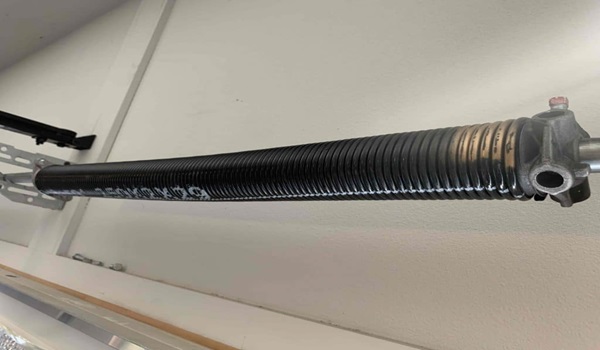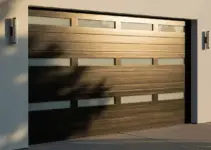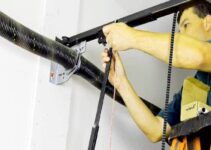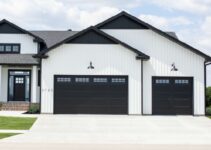Torsion Bar Garage Door
Garage doors, often overlooked in their significance, play a pivotal role in ensuring the security and accessibility of our homes.
While they are a daily part of our lives, the unsung hero behind their seamless operation is the torsion bar, also recognized as the torsion spring.
Definition of a Torsion Bar
A torsion bar, within the realm of garage doors, is a specialized spring meticulously engineered to counterbalance the weight of the door.
Unlike its counterparts, it is not merely a component but a strategic element designed to enhance the functionality of garage doors.
Purpose of a Torsion Bar in Garage Doors
The primary purpose of integrating a torsion bar into the mechanics of a garage door lies in its ability to store energy through controlled twisting. This stored energy becomes instrumental during the door’s opening, providing the necessary force to lift the door with ease.
Conversely, when the door is in the process of closure, the torsion bar elegantly winds up, strategically storing energy to facilitate the smooth downward movement.
Beyond its mechanical functionality, the torsion bar contributes significantly to the overall user experience, making the operation of garage doors more user-friendly and efficient.
Composition and Functionality

Understanding the intricacies of the torsion bar involves delving into its composition and functionality.
Material Used in Torsion Bars
Crafted with precision from high-carbon steel wire, torsion bars are designed to withstand the demanding task of supporting and balancing the garage door. This choice of material ensures durability, longevity, and the ability to withstand the constant torsional forces.
Coiling Mechanism and Energy Storage
The coiling mechanism is the heart of the torsion bar. Its tightly wound structure not only allows for efficient energy storage but also ensures a controlled release.
This dynamic interplay between coiling and uncoiling is the key to the torsion bar’s functionality, providing the necessary force for smooth door operation.
Unwinding Process During Door Opening
As the garage door opens, the torsion bar gracefully unwinds, releasing the stored energy. This controlled release is crucial for providing the required force to lift the door, preventing sudden jolts or imbalances.
Winding Process During Door Closure
Conversely, during the closure of the garage door, the torsion bar winds up in a calculated manner. This winding process strategically stores energy, ensuring a controlled and gradual descent of the door.
The result is not just operational efficiency but also a reduction in wear and tear on the garage door components.
In essence, the composition and functionality of the torsion bar embody a harmonious balance between strength, flexibility, and controlled energy release.
Types of Torsion Bars
Torsion bars come in various types, each catering to specific garage door configurations and weights.
Single Torsion Bars
- Suitable for Lighter Garage Doors Single torsion bars find their niche in lighter garage doors, typically those up to 10 feet wide. Their design and mounting make them ideal for providing balance and support in such scenarios.
- Mounting on a Central Tube These torsion bars are strategically mounted on a central tube that runs along the garage door header. This centralized placement contributes to even weight distribution and efficient operation.
Double Torsion Bars
- Used for Heavier Garage Doors Double torsion bars step into action for heavier garage doors, typically those exceeding 10 feet in width. Their dual-tube mounting configuration ensures optimal support for the increased weight.
- Mounting on Two Side Tubes In this configuration, double torsion bars are mounted on two tubes, one on each side of the garage door header. This design choice distributes the load evenly, preventing strain on specific components and enhancing overall durability.
Understanding the types of torsion bars allows for a tailored approach, ensuring the right choice for the specific needs of the garage door.
Advantages Over Extension Springs
Comparing torsion bars with alternative spring options, particularly extension springs, unveils distinct advantages.
Reliability and Safety of Torsion Bars
Torsion bars stand out for their reliability and safety features. Enclosed within the garage door header, they present a reduced risk of damage and, more importantly, a lower likelihood of causing injuries.
This enclosed nature shields them from external elements, ensuring a longer lifespan and safer operation.
Comparison with Extension Springs
In a side-by-side comparison with extension springs, torsion bars demonstrate superior reliability. Extension springs, while cost-effective, come with a higher risk of breaking and can pose serious safety hazards if not handled properly. Torsion bars, on the other hand, offer a more robust and secure solution.
Enclosed Nature Reducing the Risk of Damage and Injury
The enclosed placement of torsion bars within the garage door header is a design choice that significantly contributes to their safety profile.
Shielded from environmental factors and protected from accidental contact, torsion bars prove to be a more secure choice for garage door springs.
Considerations for Garage Door Spring Replacement
The decision to replace garage door springs involves careful consideration of various factors.
Factors to Contemplate Before Replacement
Before embarking on the journey of garage door spring replacement, homeowners should contemplate factors such as the weight and size of the door, the specific requirements of the garage space, and budget constraints.
This thoughtful consideration ensures that the chosen springs align with the unique needs of the garage door.
Cost Considerations
While torsion bars may entail a slightly higher upfront cost compared to alternative spring options, their long-term benefits often justify the investment.
The durability, reliability, and reduced maintenance costs make torsion bars a wise financial decision in the context of garage door spring replacement.
Long-term Investment Perspective
Viewing the replacement of garage door springs as a long-term investment reveals the superior advantages of torsion bars.
Their extended lifespan, minimal maintenance requirements, and enhanced safety features position them as a valuable and sustainable choice.
Conclusion
The torsion bar emerges as a reliable and efficient solution for ensuring the smooth operation of garage doors. Its meticulously engineered design, composition, and functionality contribute to a harmonious interplay that enhances both the performance and safety of garage doors.
FAQs
Are torsion bars suitable for all types of garage doors?
Torsion bars are versatile and can be used for a wide range of garage door sizes, providing effective balance and support.
How do torsion bars compare to extension springs in terms of safety?
Torsion bars are generally considered safer as they are enclosed within the garage door header, reducing the risk of injury.
What factors should be considered before replacing garage door springs?
Before replacement, factors such as door weight, size, and budget should be carefully considered to ensure optimal performance.
Are torsion bars more expensive than other spring options?
While torsion bars may have a slightly higher upfront cost, they are often considered a better long-term investment due to their reliability and durability.
Can torsion bars be installed as a DIY project, or is professional assistance necessary?
Installing torsion bars requires precision and knowledge. It is recommended to seek professional assistance to ensure correct installation and optimal performance.


